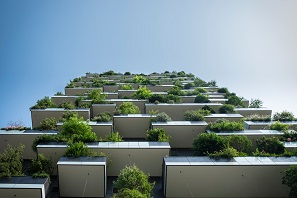 Investor interest in green development has been big business for a while now and the trends haven’t changed—green investing is unilaterally hot.
Investor interest in green development has been big business for a while now and the trends haven’t changed—green investing is unilaterally hot.
Green construction and net-zero buildings have been shining lights in historically glum markets, with green building growing in 2012. But what’s the news with green building and developments? And what are investors and lenders doing for small-scale developers and individual clients?
The Lowdown
The overall green building market has seen consistent growth since 2005. Particularly, the entire market for green building grew $11 billion 2013 to 2014. This has been reflected all the way down to the personal banking level and across the United States.
The employment market has also benefited greatly, with wages for laborers working on green construction projects, typically requiring an added level of finesse, earning $31k on average. This has been reflected in more relaxed attitudes to lending given the perceived sustainability of the market. It’s no different in Europe, too, as confidence in the market has seen lenders relax their terms, such as this Finnish example.
What’s Driving the Market?
Green building has been big for a while, as we’ve demonstrated above. However, ever since the sweeping directions made by the Paris Accords, an extra focus has been placed on the industry. U.S. government policy has seen some divergence from that, but big business is committed to green.
In the building industry, it’s commercial building that’s driving the industry. The 2016 Green Building Report by Dodge D&A showed that 46 percent of companies planned green projects within the next year.
What’s in the Pipeline?
Green building and technology are intrinsically linked as engineers seek to find new ways to incorporate environmentally friendly technology and rejig the technologies of the past that are perhaps hard to extricate from existing buildings.
By now we’re all familiar with solar panels and their effects. However, they’re constantly being updated, and now engineers are working on ways to shape them into flexible ways; take, for example, Tesla’s solar shingles, at consumer level, and the Indian government’s $100 billion solar panel investment fund. Another complex, but low-impact way of reducing carbon footprint is the employment of passive building design; essentially, finding ways for a building to power itself through the earth’s natural processes, like maximizing the amount of available sunlight and heat retention of a building, meaning it can remain carbon neutral.
The necessity of clever building changes across the globe have been key in driving waves of new technology, and with them, interest from investors. The green building market can only get more exciting, and is definitely worth keeping an eye on—or, working in.





